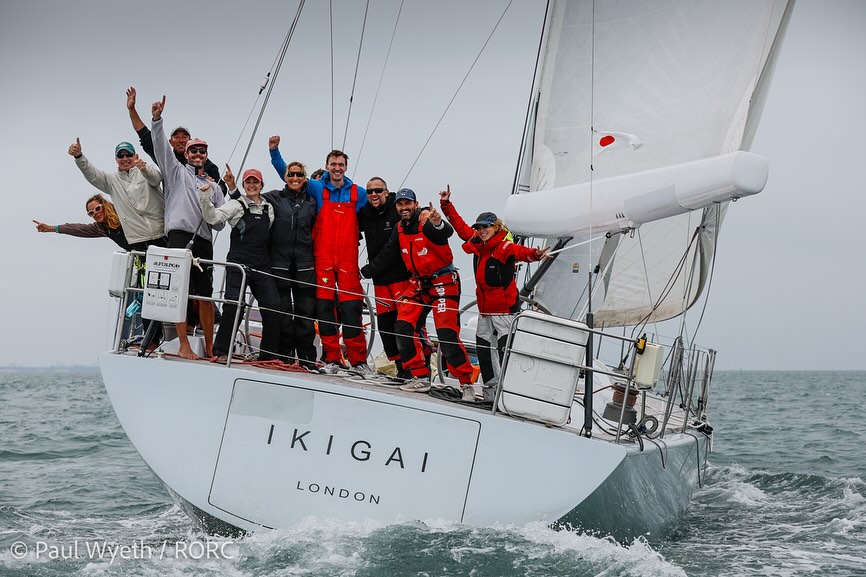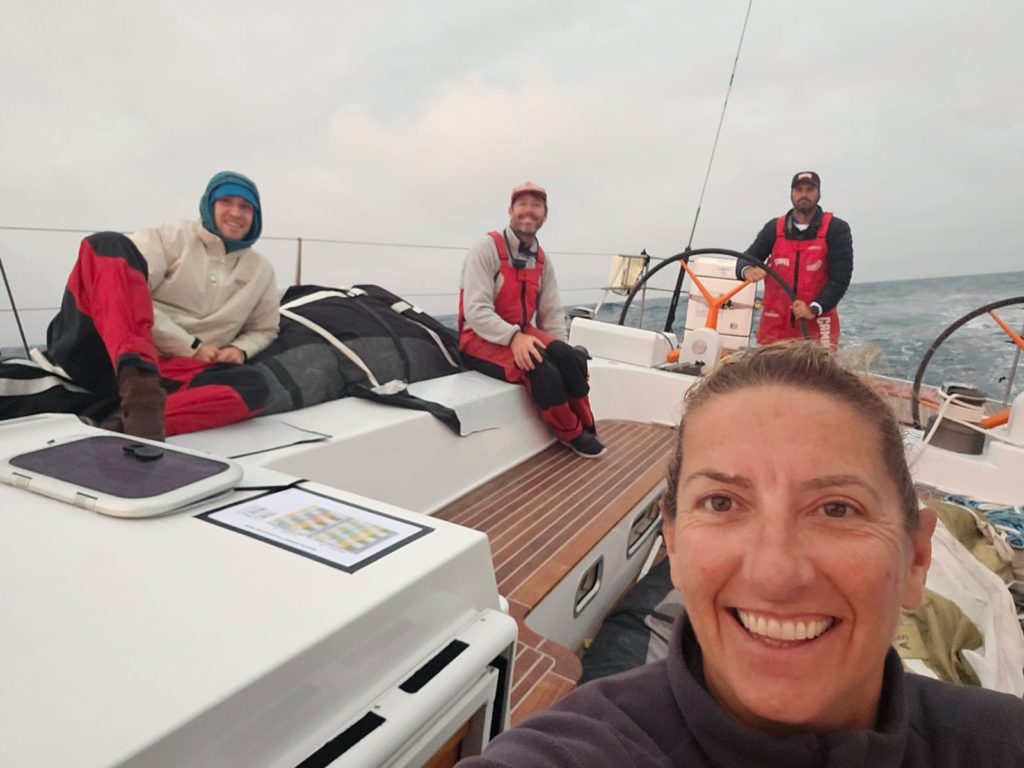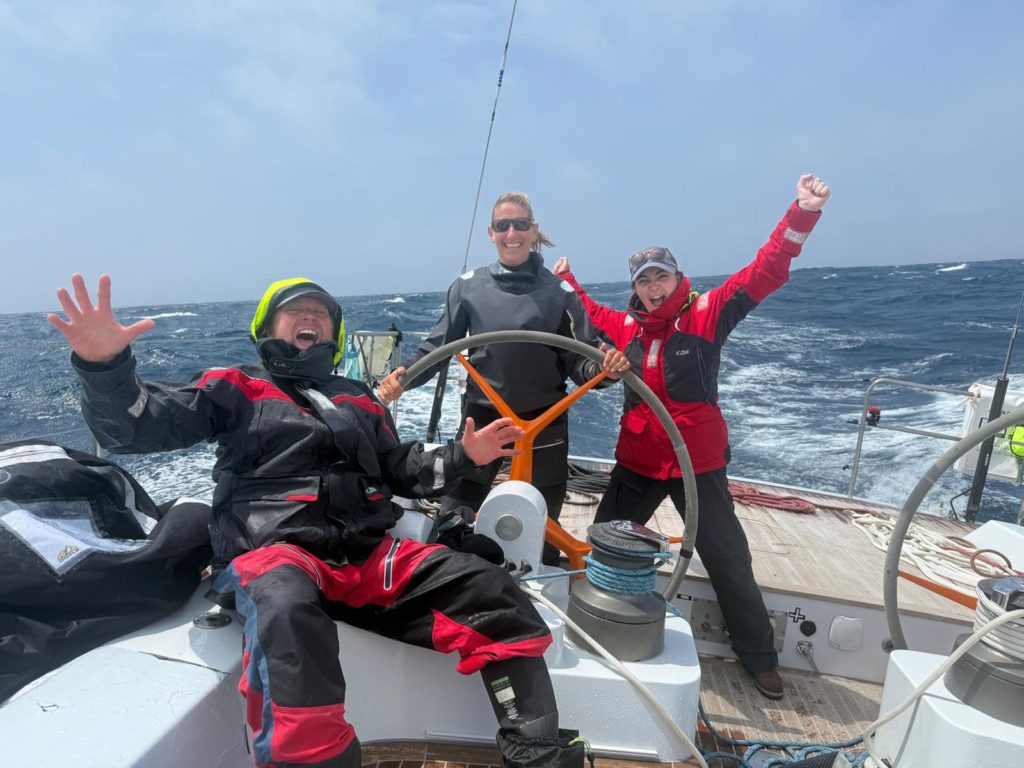
Our transatlantic race aboard Ikigai was a journey marked by challenge, camaraderie, and the ever-changing moods of the ocean. From the foggy departure through the wind farms near Nantucket Shoals to our final miles along the UK’s south coast, this race tested every ounce of patience, skill, and seamanship we had.
The early days were grey and windless, demanding concentration as we threaded through dense fog, dodging buoys and boats with nothing but radar and instinct to guide us. Ikigai, a 62-tonne cruiser, was never going to thrive in light upwind conditions- but we made steady progress east, helped by dolphins, basking sharks, and even curious sunfish all keeping us company.
As we transitioned off the continental shelf and into deeper Atlantic waters, the fog finally gave way to sunshine and blue skies. The Code 0 and new spinnakers came out, and our daily sail changes began. Boat maintenance, including trips to the top of the mast in rolling swell, kept us sharp and sea-ready.
Then came the dreaded light winds. For days we were nearly becalmed, surrounded by whales and glassy seas. Point Alpha, marking the end of the Ice Exclusion Zone, felt like a hard-earned milestone. The class bunched together again to provide a virtual restart in the mid-Atlantic. With the Gulf Stream beneath us, warm water helped drive us eastward, even as the grey skies returned. The rhythm of watches, damp kit, and drizzle wore at us, but the halfway point brought a cheer, a smile and the resolve to finish strong.

Then came the breeze and with it, our record mileage. One night, in heavy weather, we made a textbook spinnaker drop after the wind jumped to 35 knots. It was a reminder that offshore racing never follows the forecast. With white sails hoisted, Ikigai covered 289 miles in 24 hours—a record for this boat.
The final stretch, past the Scilly Isles and toward the Lizard, brought light winds, TSS challenges and tight racing against familiar rivals, Haspa Hamburg and Moana, sighting them not just on AIS but with our own eyes.

With only 50 miles to go, we reflected on what it means to cross an ocean. We’ve weathered squalls, fixed sails in the dark, laughed across language barriers, and stayed focused on safety and seamanship. From zero wind to surfing at 24 knots, the full spectrum of offshore sailing played out across our 3,000-mile racecourse. The bonds formed on Ikigai will last far beyond the finish line. We are grateful—for the safe passage, the marine life, the shared stories and the incredible support from home. This wasn’t just a race, it was a reminder of why we sail: for the challenge, the connection and the sheer joy of crossing an ocean together.